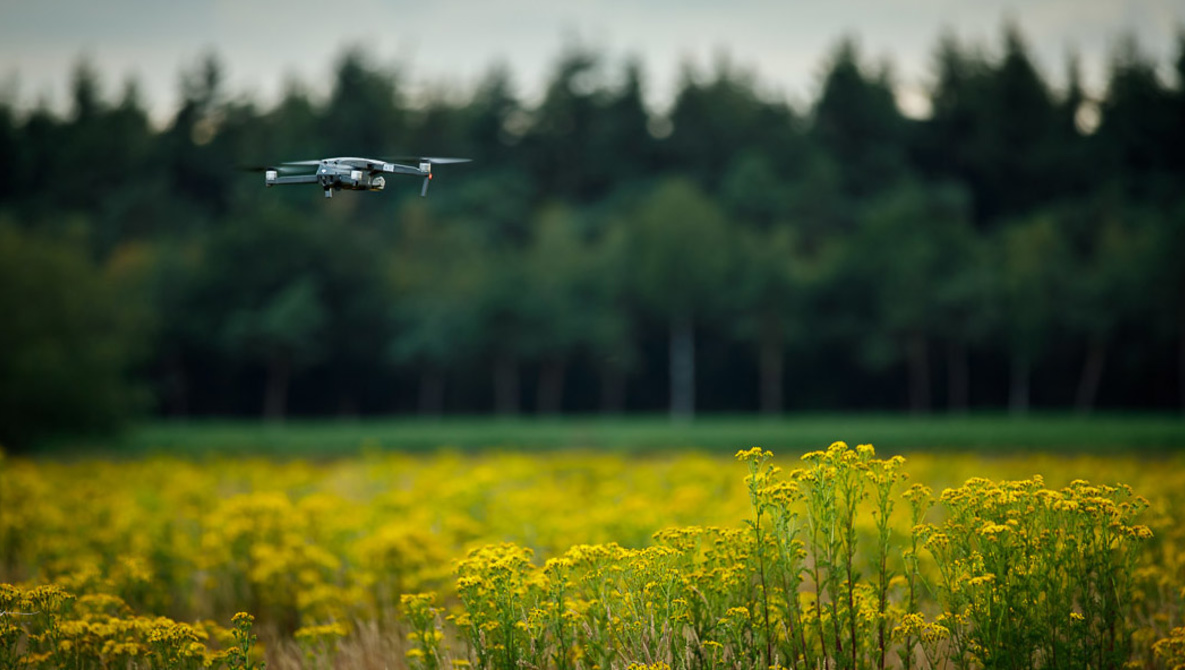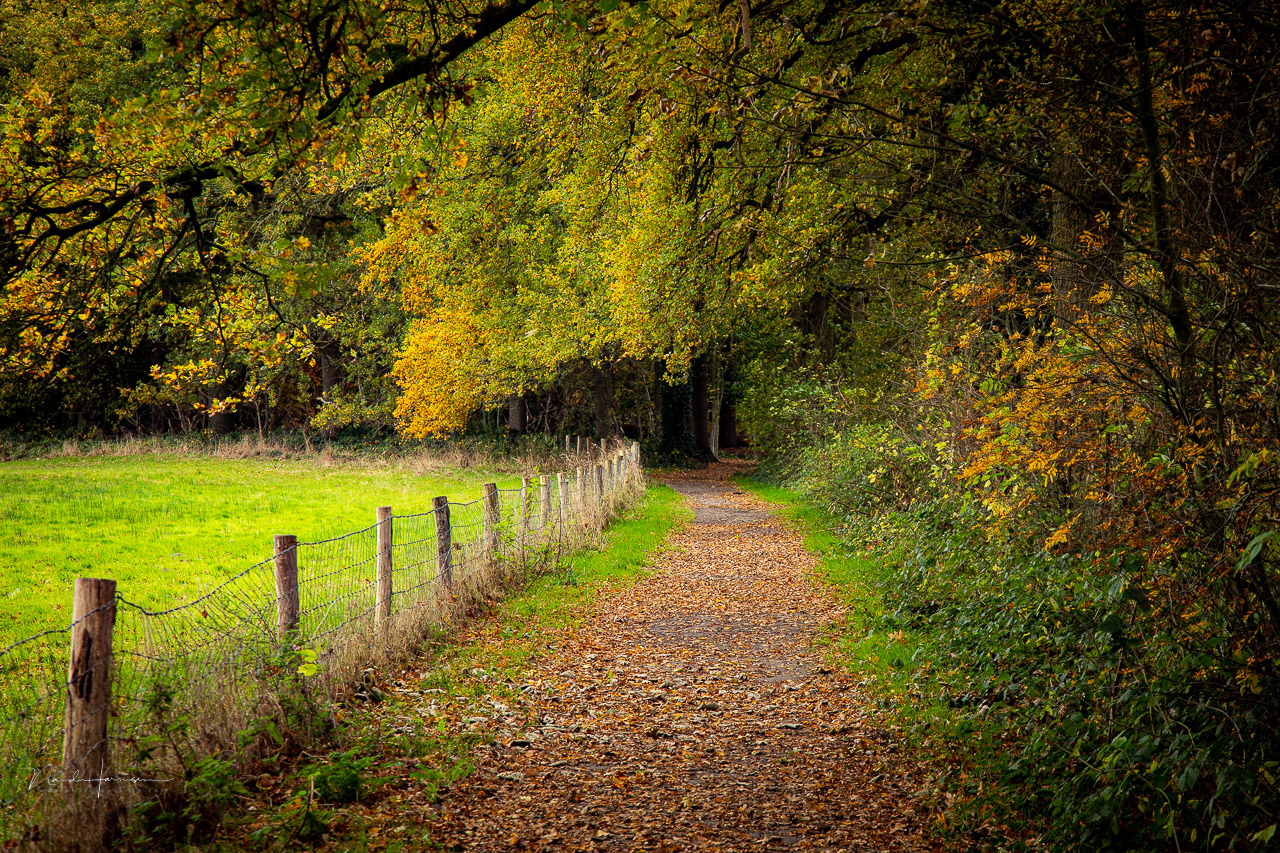A drone allows you to take photographs to the next level. There is only one downside for most drones I know of. The camera can’t be tilted for vertical shots. That doesn’t mean you can’t shoot vertical images. The solution is a panorama.
Although not everyone is fond of drones, these little devices can take you to places that can’t be reached. Or it can take you high up into the sky for a bird's eye view. But only if you’re allowed to fly, that is. These flying devices aren’t allowed to be used everywhere. But if you are at a location where flying a drone is possible, it can bring your photography to another level.
Shooting photos with a drone doesn’t require going high into the sky. Even a few meters can offer a completely different view. You can see how a road winds through the landscape, or you can see the flow of a stream or river.
Besides that, a drone can bring your camera just beyond that one bush to get a clear view of a landscape. In other words, a drone doesn’t have to go up to the maximum allowed altitude for the best result. But I have to confess, sometimes, it can be quite amazing seeing and photographing the world from above.

The drone I use doesn't allow the camera to rotate. Therefore, a simple vertically oriented photo is not easily done.
The Reason for a Vertically Oriented Photo
If you take a high vantage point to look upon the landscape, it will fill a big part of the frame. Chances are, you will run out of space at the top or at the bottom if the photo is taken horizontally. A lower vantage point suppresses the landscape to a smaller part of the frame, making it easier to fit everything between the borders of the image.

The height of a camera allows you to manipulate the area that is filled with the subject. A vertical image will allow more room for filling the frame.
You can try this out yourself by photographing a road from a very low angle, and then from a high angle by holding the camera over your head. In the first photo, it’s not possible to see where the road leads to. The second photo will show that, but it will take so much space there won't be room for much else. See the before-after example below to see the difference. You will have to choose between showing the forest canopy or showing the path.
Now, take the same photo in vertical orientation. You might lose a bit on either side of the frame, but it will allow you to show the path together with the forest canopy. If you're using a regular camera, it's easy to accomplish. Just turn the camera. With a drone, that becomes much more difficult.
Vertically Oriented Photos With a Drone
With drone photography, the camera will be even higher, making it even more difficult to fit everything in the horizontal frame. In this situation, a vertically oriented photo might be the better choice. You will have much more space to show that winding road or the stream through the landscape. The only problem with a lot of drones is the inability to rotate the camera.
Some modern drones offer the ability to rotate the gimbal in order to allow vertically oriented photos. Still, with most drones, you're limited to the horizontal orientation. But there is a solution, of course. If you didn’t guessed it by now, it’s a vertical panorama.
Although it might seem obvious, not every drone photographer is aware of this possibility. They know about horizontal panoramic shots, but often forget about vertical panoramic shots. If you rely on the automated software that controls the drone, you will find a setting for panorama photography, but only in the horizontal direction. So, you have to do it yourself.
How to Take Images for a Vertical Panorama With a Drone
It is quite easy to make a vertical panorama with a drone. Just fly to the position you want and keep the drone hovering as stable as possible. If the drone has a tripod mode, activate it, although that isn’t always necessary if there isn’t much wind. Fine-tune the position and height until you reach the best possible composition. You might have to look up and down a few times so you know what will be in the frame. Take your time.
Next, rotate the gimbal downwards, looking towards the ground. Always rotate a bit farther than necessary to have the ability to crop afterwards. Take the shot. For each successive image, rotate the gimbal a few degrees upwards. Try to keep about 30 percent overlap between the images. This way you can capture everything you want in four or five images.
Stitching the Images
You need to stitch the images together in post, obviously. This is possible in specialized panorama software like PTgui, but if you’re a user of Adobe Lightroom Classic or Adobe Photoshop, that will do as well. Just load the images into the stitching part of the software, and you’re nearly done.
I always perform post-processing for each image before I stitch it together. I feel I have much more control this way, but I might also try it the other way around. Use the method that works best for you.
After stitching, there might be some projection errors or a tilted horizon. You have to choose the projection that offers the best possible result. This might depend on the amount of images you want to stitch. For me, in Lightroom Classic, the Perspective projection offers the best results on most occasions. If it leaves you with a lot of empty space at the sides, try Boundary Wrap.
The boundary wrap can ruin a straight horizon. If it does, you can transfer the image over to Photoshop and transform the perspective until you’re satisfied.

Choose the best projection for your images. I find the Perspective projection the best option most of the time.

After stitching, you can optimize your photo until you're happy. Now you have a vertical drone image.
The End Result
This all may seem a lot of work, but it’s not that bad. Most of the time, it goes smoothly, unless the drone had trouble hovering at one place due to high winds or if you forgot to activate the tripod mode, for instance. Let me end this article with a selection of vertical drone photos I have takwn in the last few years to get an idea of the possibilities.
If you have any additions that can help for taking vertical panoramic drone shots, please share these in the comments below.



























" But there is a solution, of course. If you didn’t guessed it by now, it’s a vertical panorama." Or crop the horizontal shot.
That doesn't work because you won't get more in the frame, you loose the wide angle. That's the point, having a vertical wide angle.